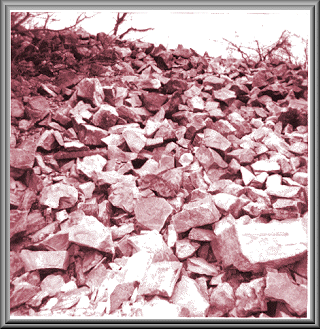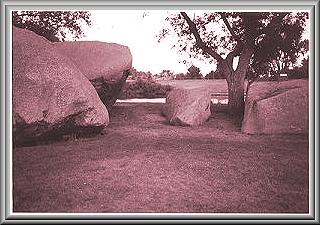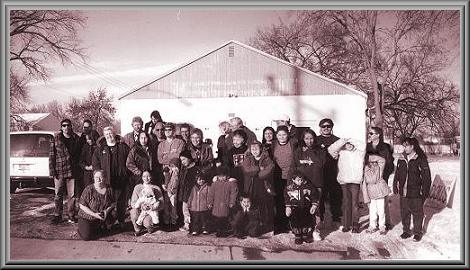|
Chuck
Derby, (Running Elk) was born in Pipestone Indian School hospital,
Minnesota to Ethel (nee Crow) and Harvey in February, 1941 and
he has continued to live there ever since. According to tradition,
as the family's first born son he inherited the name Chaske. Which
has since been mutated to Chuck or Charlie.
After attending Pipestone High school, and Haskell Institute in
Lawrence, Kansas, Mr Derby worked in general construction and
natural gas pipeline construction before he began working for
the Pipestone National Monument as a general laborer in 1963.
He was promoted to Maintenance Supervisor in 1967 and continued
in that position until he retired in 1994.
In
his personal life Chuck has been working in the quarries since
his father first took him there as a small child. He often says
that he thought he was playing when he filled his little buckets
up with dirt, when he was about five, and it wasn’t until the
buckets got bigger and heavier that he realized that this was
not playing, but something much harder. He has also been pipemaking
for 40 years, another skill passed down to him from his father.
By continuing the quarrying and pipemaking he is following in
the footsteps of his father, grandfather, and ancestors, who quarried
prior to the 1860's
|
|
|
Mr
Derby has been a lifelong adherent to traditional values, and
has served on many Native American committees and Boards, dealing
with various things regarding historical and traditional Native
American issues. Not least of these issues involve the quarries,
pipemaking and ceremonials.He
has been to Washington DC to testify to Congress on behalf of
the Native Americans who use the Pipe.
In
recent years Chuck has served as the elected spokesperson for
the Original Pipestone Dakota Tiospaye, and has been the owner
director of the Little Feather Center, that has been the meeting
place of the Community..
In the 1970's Chuck appeared in the film, 'Hiawatha Pioneer Trail'
demonstrating both quarrying and pipemaking. His most recent movie
experiences include 'Minnesota River and Fields' in May 2000.
Among
other venues Chuck participated in was the Festival of Nations
in Minnepolis, where many countries exhibited their own unique
crafts. He has exhibited in the Minnesota Historical Society at
the State Capitol in St Paul, at the Joslyn Art Museum, Omaha
and also at the Iowa State Fair in Des Moines, where over 60,000
people visited his exhibit. In 1972 he demonstrated his work at
the Second World Conference on National Parks, where over 90 countries
were represented, .
|
|
|
At
the request of Native American elders, Chuck was given the honor
of carving an exact replica of the original pipe of the respected
Oglala Lakota, Crazy Horse, which was to be used for special purposes
at the Crazy Horse Monument in the Black Hills, where he had participated
in a Pipe ceremony with Arvol Looking Horse, Charles and Godfrey
Chips, Ruth Ziolkowski, (the wife of sculptor Korczak Ziolkowski,)
and others.
Through
the years of working with pipestone and making ceremonial pipes
Chuck has associated with many Native American elders, spiritual
leaders and medicine men, in 1998 he was adopted by the (now late)
Lakota Spiritual leader Joseph Flying Bye as his son, which was
a great honor. He was taught many things by Joe as well as the
spiritual leader, the late Amos Owens. By knowing these people
he has learned a lot of cultural and spiritual lessons.
Due to these ancient teachings he has been able to incorporate
traditions into his everyday life, just as his ancestors did many
years ago.
Chuck
hopes that by teaching quarrying in this way the traditions of
the Pipe will not be lost to the Native American Peoples across
Turtle Island.
|
|
|
|
|
This
is a photo of some of the Pipestone Dakota Community, some
of these people will be helping during the workshops. Most
of the men are pipemakers and the woman make small crafts
from the leftover stone so that none is wasted. Almost all
of the Community are experienced carvers. Most of the men
do or have quarried the sacred stone during their lifetime.
The
Community will welcome you warmly to Pipestone if you care
to come to the workshops.
|
|
|













